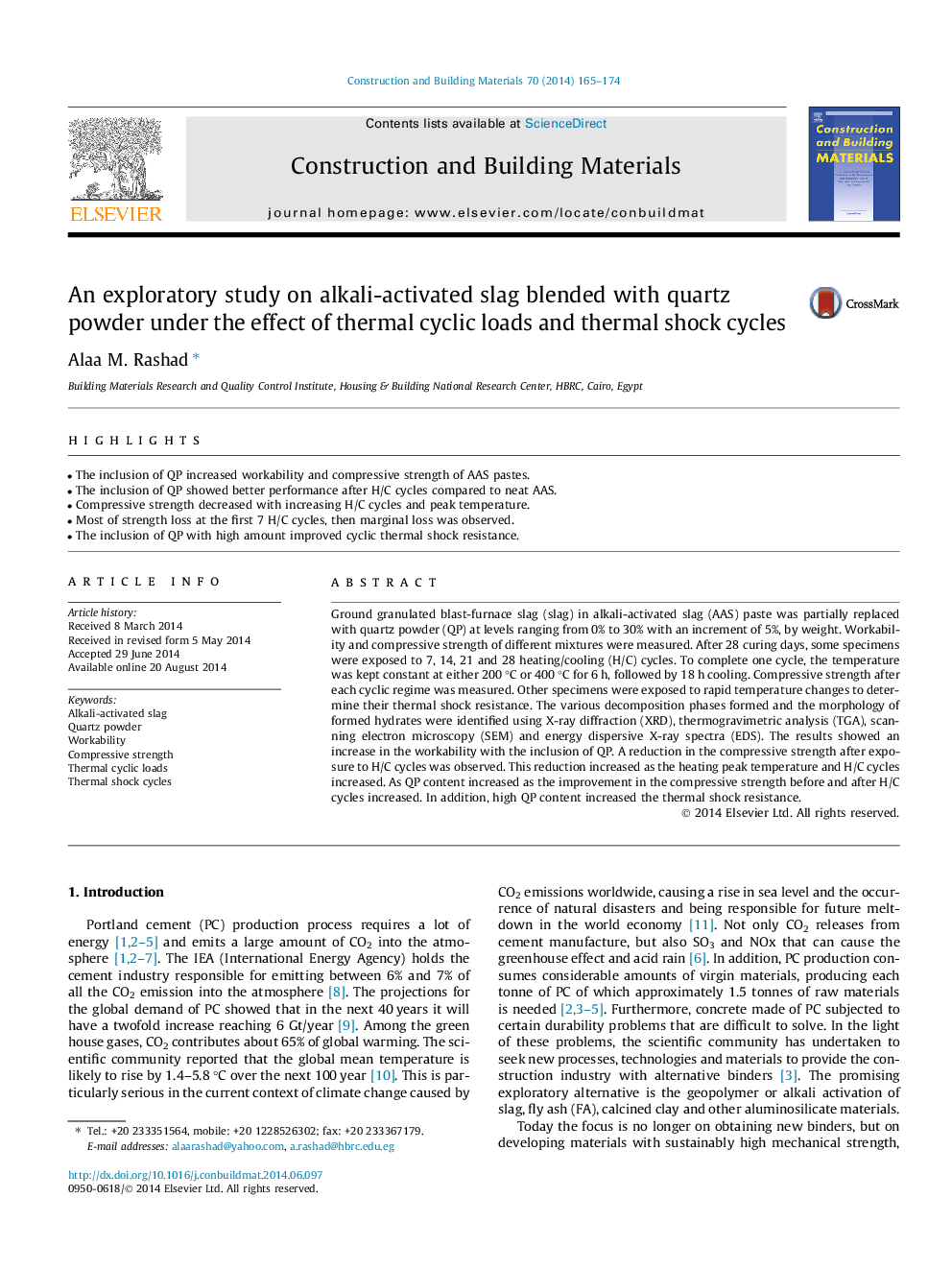| کد مقاله | کد نشریه | سال انتشار | مقاله انگلیسی | نسخه تمام متن |
|---|---|---|---|---|
| 257350 | 503585 | 2014 | 10 صفحه PDF | دانلود رایگان |
• The inclusion of QP increased workability and compressive strength of AAS pastes.
• The inclusion of QP showed better performance after H/C cycles compared to neat AAS.
• Compressive strength decreased with increasing H/C cycles and peak temperature.
• Most of strength loss at the first 7 H/C cycles, then marginal loss was observed.
• The inclusion of QP with high amount improved cyclic thermal shock resistance.
Ground granulated blast-furnace slag (slag) in alkali-activated slag (AAS) paste was partially replaced with quartz powder (QP) at levels ranging from 0% to 30% with an increment of 5%, by weight. Workability and compressive strength of different mixtures were measured. After 28 curing days, some specimens were exposed to 7, 14, 21 and 28 heating/cooling (H/C) cycles. To complete one cycle, the temperature was kept constant at either 200 °C or 400 °C for 6 h, followed by 18 h cooling. Compressive strength after each cyclic regime was measured. Other specimens were exposed to rapid temperature changes to determine their thermal shock resistance. The various decomposition phases formed and the morphology of formed hydrates were identified using X-ray diffraction (XRD), thermogravimetric analysis (TGA), scanning electron microscopy (SEM) and energy dispersive X-ray spectra (EDS). The results showed an increase in the workability with the inclusion of QP. A reduction in the compressive strength after exposure to H/C cycles was observed. This reduction increased as the heating peak temperature and H/C cycles increased. As QP content increased as the improvement in the compressive strength before and after H/C cycles increased. In addition, high QP content increased the thermal shock resistance.
Journal: Construction and Building Materials - Volume 70, 15 November 2014, Pages 165–174
